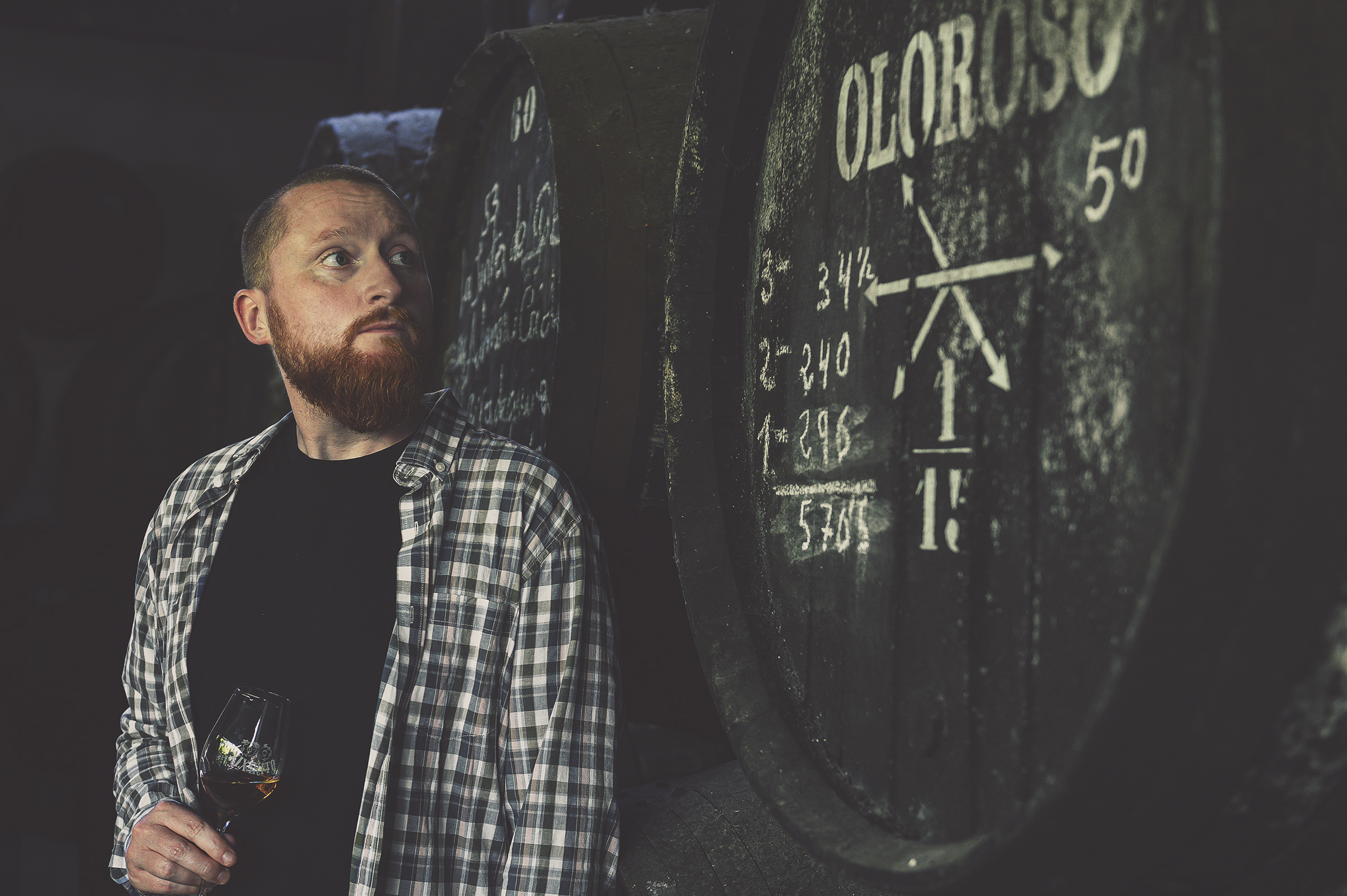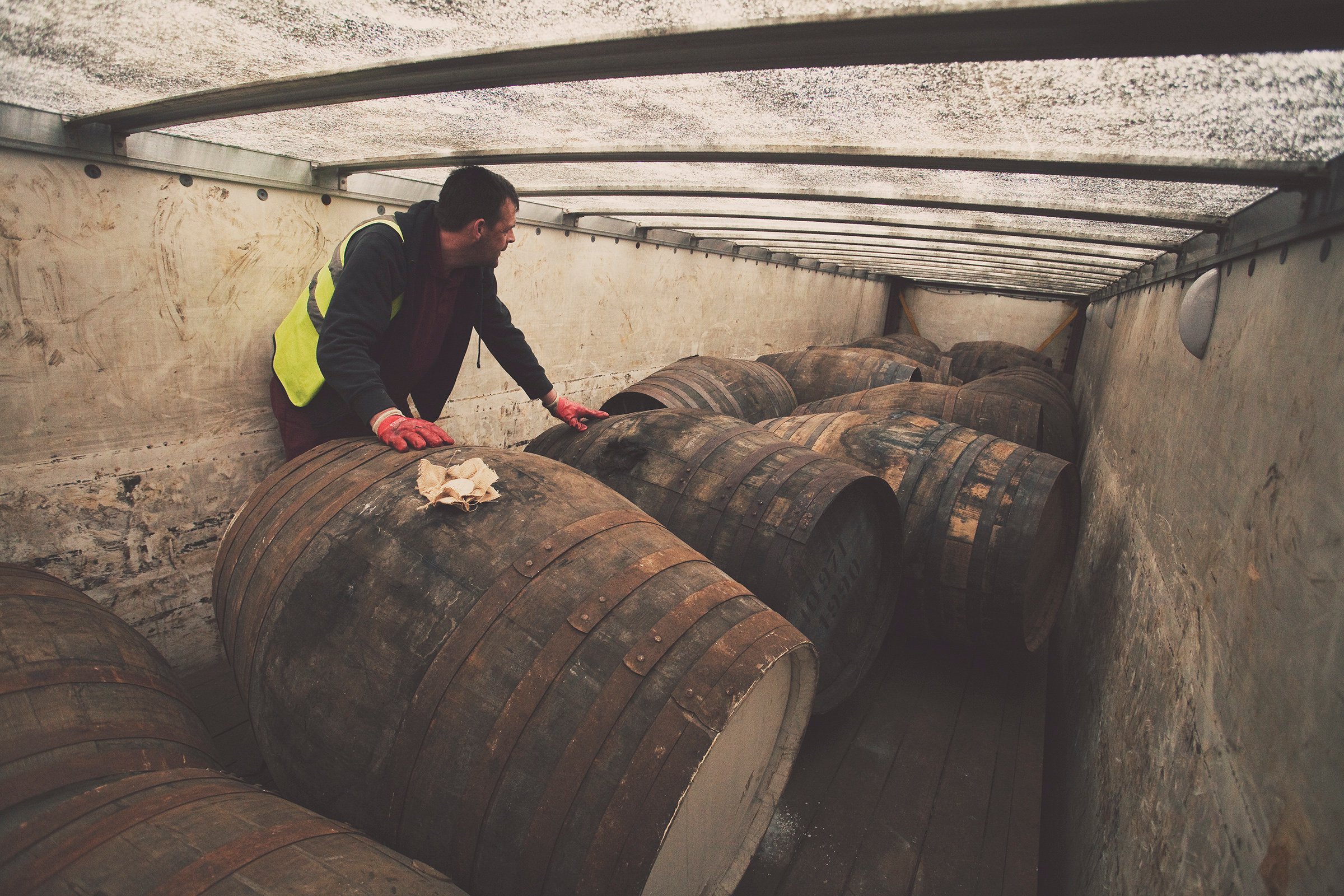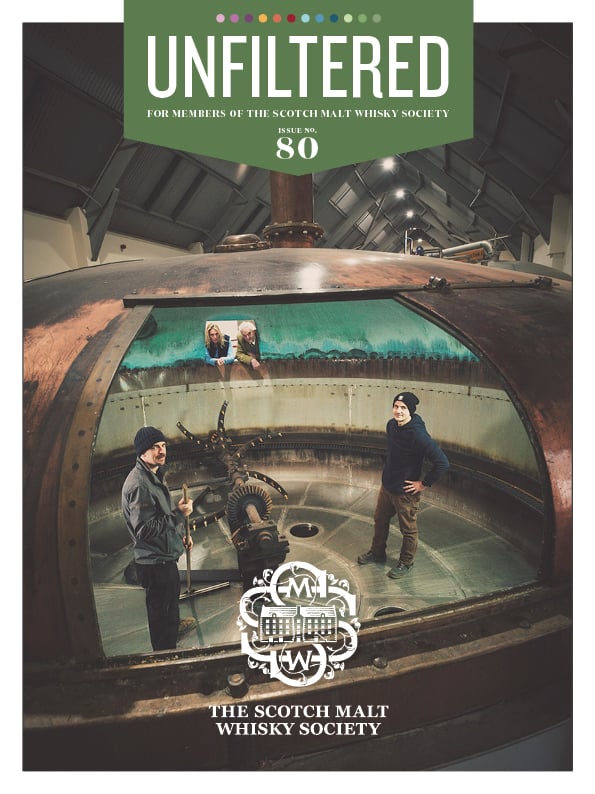Originally published in Unfiltered #80
Words: Richard Goslan
For almost as long as The Scotch Malt Whisky Society has been in existence, we have not only been bottling whisky taken from a single cask — we’ve been actively managing the whisky’s maturation.
The SMWS may have started life 40 years ago by bottling already mature whiskies straight from their casks, but it quickly became apparent to the Society’s first managing director, Anne Dana, that demand for this precious aged product was going to outstrip supply. That prompted Anne to get the Society to start buying its own barrels, specifically to age new-make spirit in.
“I said, ‘Look, we have to start putting whisky down’,” she says.
“A previous batch [of mature whisky] had sold out and I saw the need to start laying down our own whisky, and choosing the barrels that it would be put in.”

SMWS Head of Whisky Creation Euan Campbell in Jerez
That early attention to wood quality in the 1980s continued into the next decade, along with the Society’s first forays into the world of additional maturation. Bottling lists from as early as 1991 describe “an experiment” with Cask No. 39.7 being decanted after 12 years in a second-fill fino cask into “a really good oloroso cask, where it has lain for two years”. The result was described as “a very good whisky indeed”.
That move into additional maturation gained further momentum in 1995, when then-managing director Richard Gordon enlisted Dr Jim Swan as an adviser for his expertise in wood purchasing and wood management. “Jim’s work for Glenmorangie was ground-breaking at that time,” says Richard.
“He then became a tremendous resource to the Society, where our main interest was in top quality wood for new fill. But we also used the opportunity, when buying in casks, to start finishing various aged and semi-aged whiskies, mainly in sherry and port.
“My goal at the time was for the Society to build its own stock profile from new fill to fully mature, rather than simply relying on buying mature whisky to bottle. As wood is such a major contributor to flavour and quality it made sense to invest heavily in quality casks.
“Most casks went to new fill, but plenty to ‘additional maturation’ as well. Using sherry and port casks allowed us to take young whiskies, from three to five years old, and then enhance their flavour profile over the subsequent years. We also used various port and sherry casks to give some older whiskies an additional one or two years of maturation.
“All of this gave added interest to members and resulted in some outstanding whiskies.”
When the Society was bought over by Glenmorangie in 2004, that brought the assistance of its own experts in wood management and additional maturation, such as master blender Dr Rachel Barrie and head of distilling and whisky creation, Dr Bill Lumsden.

Dr Rachel Barrie
“Rachel would identify batches of casks for this and then select from a range of top-quality wood that Glenmorangie was buying for its own ‘extra matured range’,” says SMWS spirits director Kai Ivalo.
“In particular, when Glenmorangie was moving to its new purpose-built bottling plant in 2011, Rachel organised a batch of around 100 casks for re-racking.
“The Society also benefited from Bill’s involvement in selecting which casks would benefit from additional maturation and suggesting the right wood for them to be transferred to. He essentially trained us and then checked the progress of some of those casks.”
This year sees the official opening of our own cask warehouse at Masterton Bond in Uddingston, giving SMWS head of whisky creation Euan Campbell even greater control over the stock.
As well as taking delivery of spirit at the warehouse, there are regular shipments of empty casks. The Society has now established relationships with cooperages in Scotland, the United States, Portugal, Spain, France and beyond — all of the major sources of oak barrels — and has travelled to meet the people and get first-hand experience of the quality and variety they can provide.
Euan sees that period of additional maturation as allowing members to experience more variety and complexity in the Society’s bottlings.
“Variety is something we’re always striving for, so this is another layer of complexity that we can add,” he says. “If you have a batch of 100 casks, all in first-fill bourbon, we might decide to put some into Spanish oak Pedro Ximenez hogsheads, some in oloroso, some in madeira. Obviously, we’re not going to mature everything in a different cask, but we have the opportunities to do something a bit different, and ultimately members get more choice.
“You quickly get a sense of what works, and I think most whisky lovers can instinctively pick up on the characteristics that work well together. The trick is knowing how to achieve those characteristics through wood management. But at the same time as knowing what works, if you’ve got quality spirit and quality wood, it’s enthralling to experiment and produce something that’s nothing like what you’d expect.”









